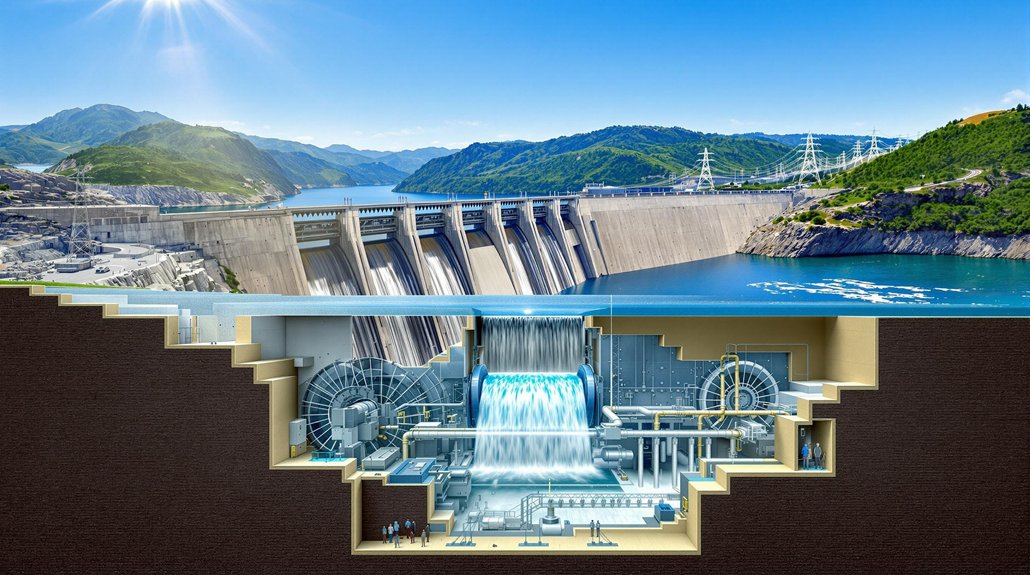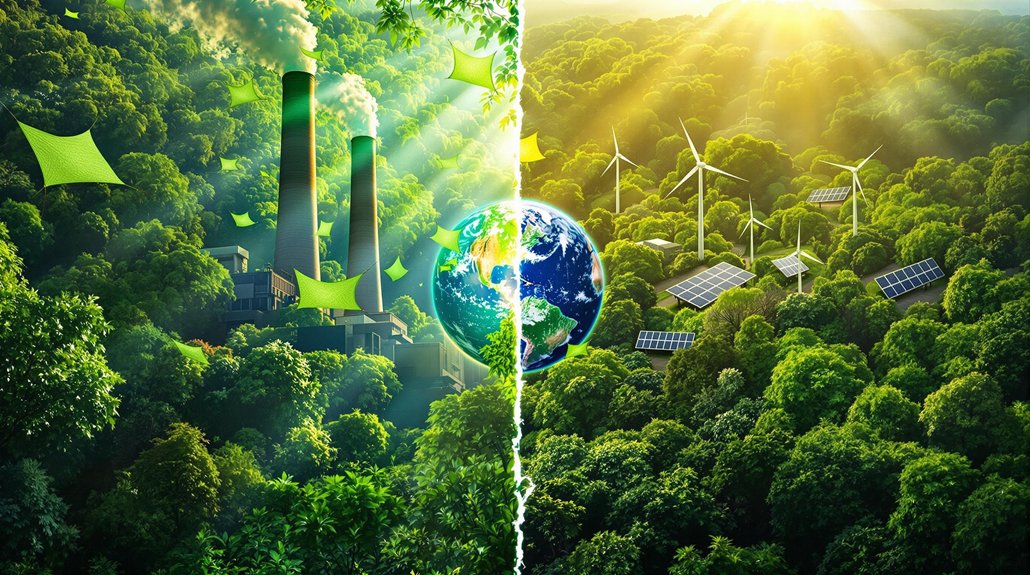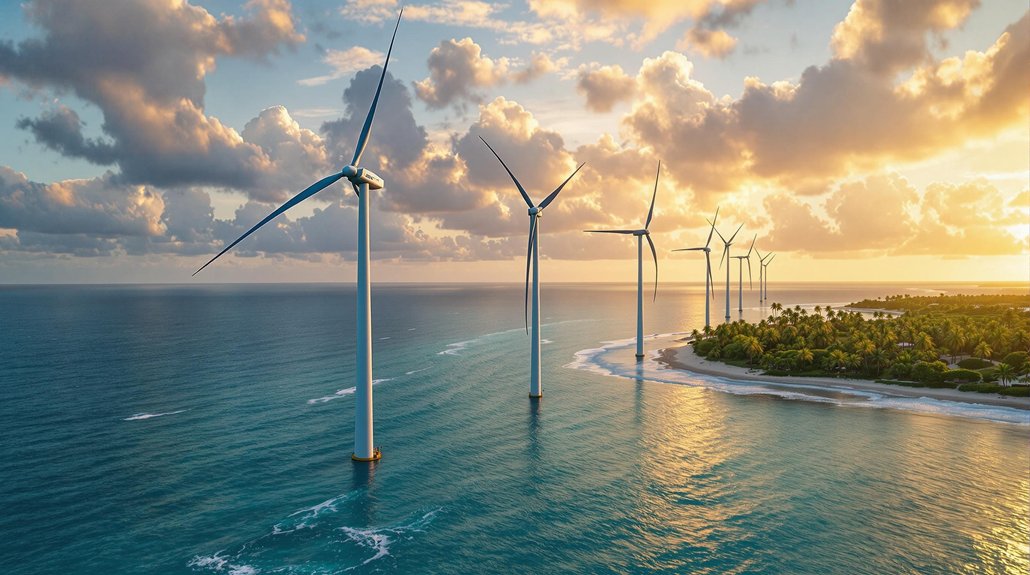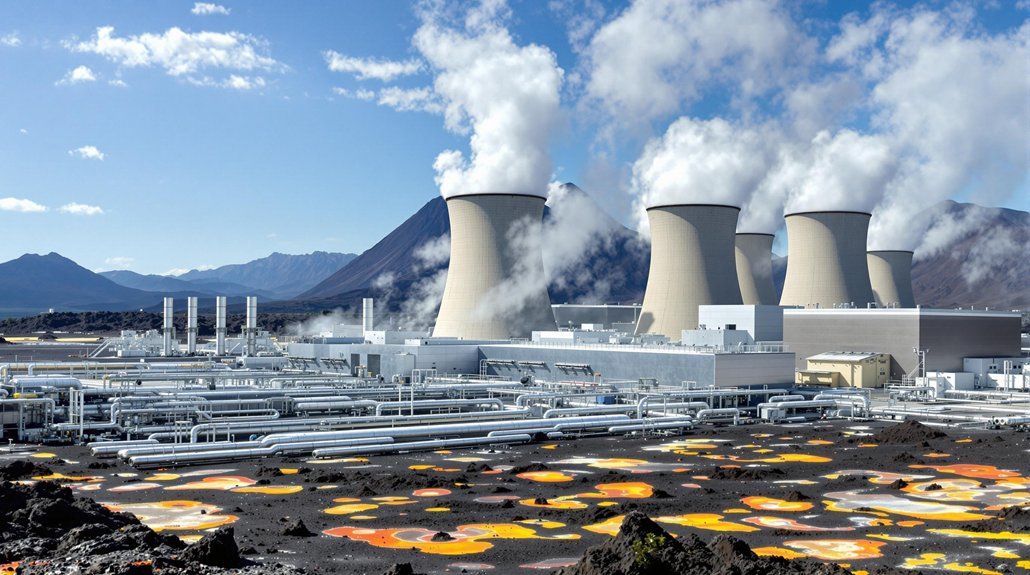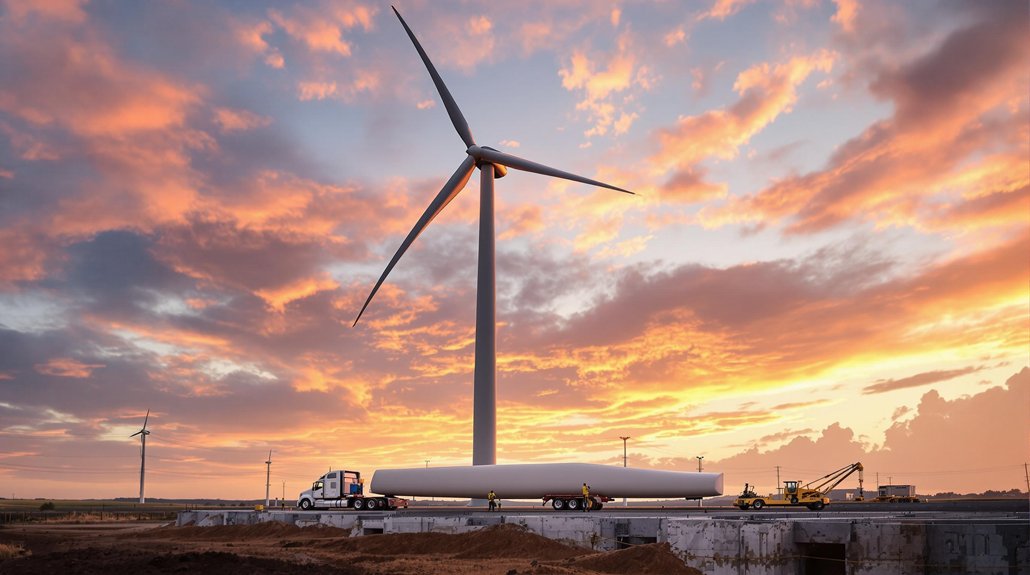Hydropower generates clean electricity through a simple process. Water flows from reservoirs through pipes, striking turbine blades that spin generators to produce electricity. It’s renewable, creates no air pollutants during operation, and provides 16% of global electricity. Modern plants achieve up to 90% efficiency with lifespans of 50-100 years. Despite some environmental challenges, hydropower remains a growing source of sustainable energy worldwide.
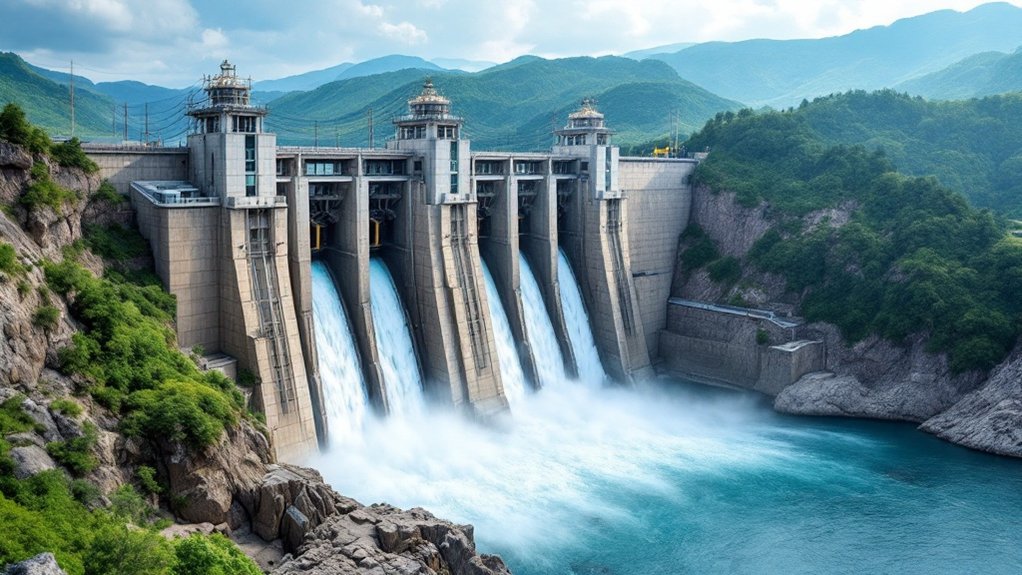
Rushing water powers one of the world’s largest sources of renewable electricity. Hydropower plants capture the energy of flowing water to generate electricity without burning fuel. The process starts when water from a reservoir flows through a large pipe called a penstock. This water strikes turbine blades, causing them to spin. The turbine connects to a generator that converts this spinning motion into electricity, which then travels to homes and businesses through power lines.
Hydropower provides 16% of the world’s electricity and makes up over 60% of all renewable electricity. China leads global production with 356 GW of capacity, while the United States operates more than 2,500 hydroelectric plants totaling 80 GW. Globally, hydropower facilities have a combined capacity of 1,308 GW as of 2020.
Unlike coal or natural gas plants, hydropower doesn’t release air pollutants or greenhouse gases during operation. It’s powered by the natural water cycle, making it a renewable resource. Hydroelectric dams can also help control flooding and create reservoirs that store water for drinking, irrigation, and recreation. Modern hydroelectric plants can reach efficiency rates of up to 90%, significantly outperforming many other power generation methods.
Several types of hydropower systems exist. Conventional dams create large reservoirs. Run-of-river systems use flowing river water with minimal storage. Pumped storage works like a battery, moving water between two reservoirs to store energy. Small hydro systems serve local areas, while tidal and wave systems capture ocean energy. With pumped-storage plants, water is stored in the upper reservoir during low demand and released during peak demand periods to ensure reliable power when needed most.
Hydropower plants offer many advantages. They’re inexpensive to operate, last 50-100 years, and can start quickly to meet peak electricity demands. They also improve energy security since they don’t rely on imported fuels.
Despite these benefits, hydropower raises environmental concerns. Dams disrupt river ecosystems, block fish migration, and change natural water flows. Reservoirs can emit methane from decomposing plants and may displace local communities. Fish populations are particularly affected when dams prevent upstream spawning migration.
Looking ahead, global hydropower capacity is expected to grow 17% by 2030. The industry is focused on upgrading existing facilities, reducing environmental impacts, and expanding pumped storage to support wind and solar power.
Frequently Asked Questions
What Environmental Impacts Does Hydropower Have on Aquatic Ecosystems?
Hydropower dams greatly alter aquatic ecosystems. They block fish migration routes, especially affecting species like salmon.
Reservoirs flood natural habitats and change water temperature and chemistry. Dam turbines can injure or kill fish.
Downstream, altered flow patterns disrupt spawning areas and reduce biodiversity. Water quality often suffers as reservoirs trap nutrients, leading to oxygen depletion.
These impacts can spread throughout entire river systems.
How Does Hydropower Compare to Solar and Wind Energy Economically?
Hydropower has the lowest electricity cost at $0.05/kWh compared to solar ($0.068/kWh) and wind ($0.053/kWh).
It’s more expensive to build but lasts 50-100+ years, while solar panels last 25-30 years and wind turbines 20-25 years.
Hydropower has higher capacity factors (40-80%) than solar (10-25%) or wind (25-50%), providing more consistent power.
Though solar and wind see faster growth and investment, hydropower remains the largest renewable energy source globally.
Can Small-Scale Hydropower Systems Work for Residential Properties?
Small-scale hydropower systems can work for residential properties with the right conditions.
They require flowing water with at least 2 gallons per minute and a 2-3 foot vertical drop.
These micro-hydro systems can generate between 100 watts and 100 kilowatts – enough to power a home.
They’re available for $1,000-$20,000 and provide constant electricity.
However, homeowners need permits, water rights, and must consider environmental impacts.
What Happens to Hydropower Generation During Drought Conditions?
Droughts severely impact hydropower generation. Water levels in reservoirs and rivers drop, reducing electricity production.
In 2021, California’s hydropower fell 48% below the 10-year average. Plant efficiency decreases with lower water flow, forcing utilities to buy more expensive power alternatives. This costs an estimated $2 billion annually.
To compensate, energy providers often turn to fossil fuels, raising consumer electricity costs and challenging grid stability during peak demand.
How Do Fish Ladders and Passage Systems Work at Hydroelectric Dams?
Fish ladders at hydroelectric dams help fish swim upstream past barriers.
They’re a series of stepped pools that mimic natural river conditions. Fish enter at the bottom and swim or jump from pool to pool until reaching the reservoir above.
Different designs accommodate various species’ swimming abilities. Water flow must be carefully controlled – fast enough to attract fish but slow enough for them to navigate.
Success rates vary widely depending on design and fish species.
